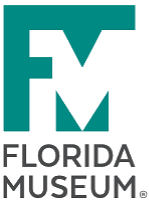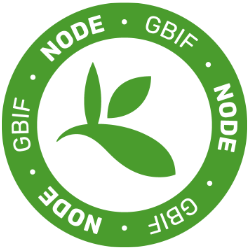Contributed by Luis D. Verde Arregoitia.
Find him on Twitter @LuisDVerde or on his Website.
 Ecomorphological research relates what species look like with where they live, how they move, and what they eat. Therefore, we need to characterize them morphologically, and natural history collections represent the most important source of such data, which can also help us understand their evolutionary relationships. However, the use and importance of museum specimens often goes unrecognized, and many collections that house these specimens are vulnerable to declines in funding, staff, maintenance, or attention.
Ecomorphological research relates what species look like with where they live, how they move, and what they eat. Therefore, we need to characterize them morphologically, and natural history collections represent the most important source of such data, which can also help us understand their evolutionary relationships. However, the use and importance of museum specimens often goes unrecognized, and many collections that house these specimens are vulnerable to declines in funding, staff, maintenance, or attention.
Caviomorph rodents are a diverse lineage endemic to the Americas and the Caribbean, occurring in various habitat types. The lineage includes arboreal, cursorial, semiaquatic, semifossorial, and subterranean species. This rich taxonomic and ecological diversity should reflect the diversification of morphological features related to different lifestyles. For example: species that burrow underground tend to have robust forelimbs and wide incisors, and arboreal species often have relatively long tails and whiskers.
For the study that produced this fully Open Access paper, “Patterns in research and data sharing for the study of form and function in caviomorph rodents,” we identified and reviewed 41 published studies that investigated any aspect of the ecomorphology of caviomorph rodents. Most studies used morphological trait data such as skull or limb bone measurements together with ecological trait data (e.g. habits, habitat preferences, or diet). We focused on trait data and on the lists of specimens examined. For each one, we determined if data relevant to ecomorphology were made available, and if so, we re-digitized these data into a common format and structure, so that they could be aggregated.
 We found that valuable morphological and ecological data were rarely shared at the specimen level. This discards useful information about intraspecific and geographic variation, and more importantly, breaks the connection between data and tangible physical specimens. Whenever these or any other relevant data were indeed shared, this was often done in ways that would not facilitate the work of future users. For many of the studies that we analyzed, the data were only available within the PDF version, and it is problematic to copy and paste text from a PDF without issues, let alone import tables for immediate reuse in any analysis software. Through a scripting approach, we were able to parse and aggregate most tables and specimen lists (provided as inline text) without having to transcribe everything manually, but the software infrastructure for automating the re-digitization of data in scientific papers remains underdeveloped.
We found that valuable morphological and ecological data were rarely shared at the specimen level. This discards useful information about intraspecific and geographic variation, and more importantly, breaks the connection between data and tangible physical specimens. Whenever these or any other relevant data were indeed shared, this was often done in ways that would not facilitate the work of future users. For many of the studies that we analyzed, the data were only available within the PDF version, and it is problematic to copy and paste text from a PDF without issues, let alone import tables for immediate reuse in any analysis software. Through a scripting approach, we were able to parse and aggregate most tables and specimen lists (provided as inline text) without having to transcribe everything manually, but the software infrastructure for automating the re-digitization of data in scientific papers remains underdeveloped.
The data we re-digitized and aggregated is now available through an interactive web app (https://luisdva.shinyapps.io/caviomorph_ecomorphology_resources_app/), in which we can search across multiple related tables by taxon and then sort and download the results. This set of standardized, usable data can be leveraged to identify the location, the research use given, and the data collected for specimens of a given taxon. This novel approach for sharing the results of a data synthesis exercise should demonstrate how interactive datasets can make it easier for end users to reuse digital specimen data.
Our work documented the ongoing usage of natural history specimens in evolutionary and ecological research, and without efforts like this one, data already derived from material in collections may remain unused, uncited, and they may even be lost. For example, the supporting data from one of the studies we reviewed was an online-only document with a broken web link. To increase the reach and impact of collections-based research, digital specimen data should ideally be provided in suitable formats. Also, we strongly suggest that this should be done for individual specimens to preserve valuable data for future research. Journals, funding agencies, and those in charge of collections can all enforce good data sharing practices. For instance, two of the authors in our study are curators at mammalogy collections (Museo Argentino de Ciencias Naturales, Buenos Aires, Argentina; and Universidad Austral de Chile, Valdivia, Chile) and are now raising awareness about the need for providing human- and machine-readable versions of any data derived from collections.
Photo 1: spiny rat by Guilherme Garbino released under a CCBY3.0 licence.
Photo 2: Collage of museum collection photos taken by the author, Luis D. Verde Arregoitia







